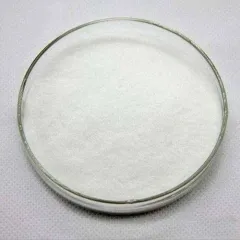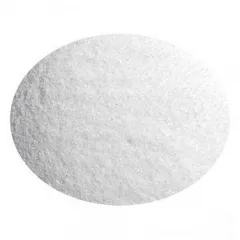1. Molecular Style and Physicochemical Foundations of Potassium Silicate
1.1 Chemical Make-up and Polymerization Habits in Aqueous Systems
(Potassium Silicate)
Potassium silicate (K TWO O · nSiO two), generally described as water glass or soluble glass, is a not natural polymer created by the combination of potassium oxide (K TWO O) and silicon dioxide (SiO TWO) at raised temperature levels, followed by dissolution in water to generate a viscous, alkaline service.
Unlike sodium silicate, its more usual counterpart, potassium silicate provides superior sturdiness, improved water resistance, and a lower tendency to effloresce, making it especially important in high-performance coverings and specialty applications.
The proportion of SiO ₂ to K TWO O, denoted as “n” (modulus), controls the material’s properties: low-modulus formulas (n < 2.5) are extremely soluble and reactive, while high-modulus systems (n > 3.0) exhibit better water resistance and film-forming capability however reduced solubility.
In aqueous environments, potassium silicate undertakes progressive condensation responses, where silanol (Si– OH) teams polymerize to develop siloxane (Si– O– Si) networks– a process comparable to natural mineralization.
This vibrant polymerization makes it possible for the development of three-dimensional silica gels upon drying or acidification, creating thick, chemically resistant matrices that bond strongly with substrates such as concrete, steel, and porcelains.
The high pH of potassium silicate solutions (typically 10– 13) assists in quick reaction with atmospheric carbon monoxide ₂ or surface area hydroxyl groups, speeding up the formation of insoluble silica-rich layers.
1.2 Thermal Stability and Architectural Transformation Under Extreme Conditions
Among the defining characteristics of potassium silicate is its extraordinary thermal security, permitting it to stand up to temperature levels going beyond 1000 ° C without considerable decomposition.
When exposed to heat, the moisturized silicate network dries out and compresses, inevitably transforming into a glassy, amorphous potassium silicate ceramic with high mechanical strength and thermal shock resistance.
This behavior underpins its usage in refractory binders, fireproofing layers, and high-temperature adhesives where natural polymers would break down or ignite.
The potassium cation, while a lot more volatile than sodium at extreme temperatures, contributes to reduce melting factors and boosted sintering behavior, which can be helpful in ceramic processing and glaze formulas.
Additionally, the capability of potassium silicate to respond with metal oxides at elevated temperature levels allows the development of complicated aluminosilicate or alkali silicate glasses, which are essential to advanced ceramic composites and geopolymer systems.
( Potassium Silicate)
2. Industrial and Building Applications in Lasting Framework
2.1 Duty in Concrete Densification and Surface Area Solidifying
In the building industry, potassium silicate has actually gained prestige as a chemical hardener and densifier for concrete surface areas, considerably improving abrasion resistance, dirt control, and long-lasting sturdiness.
Upon application, the silicate varieties penetrate the concrete’s capillary pores and respond with complimentary calcium hydroxide (Ca(OH)TWO)– a by-product of concrete hydration– to create calcium silicate hydrate (C-S-H), the same binding phase that gives concrete its toughness.
This pozzolanic response successfully “seals” the matrix from within, lowering leaks in the structure and preventing the ingress of water, chlorides, and other harsh agents that cause support rust and spalling.
Compared to standard sodium-based silicates, potassium silicate produces less efflorescence because of the higher solubility and wheelchair of potassium ions, leading to a cleaner, extra aesthetically pleasing coating– particularly vital in building concrete and polished flooring systems.
Additionally, the improved surface area solidity improves resistance to foot and car web traffic, expanding life span and decreasing upkeep prices in commercial facilities, warehouses, and vehicle parking frameworks.
2.2 Fire-Resistant Coatings and Passive Fire Defense Equipments
Potassium silicate is a crucial part in intumescent and non-intumescent fireproofing finishings for structural steel and other flammable substratums.
When exposed to high temperatures, the silicate matrix undergoes dehydration and increases in conjunction with blowing representatives and char-forming materials, creating a low-density, insulating ceramic layer that guards the hidden material from heat.
This protective barrier can keep architectural integrity for as much as a number of hours during a fire event, offering vital time for discharge and firefighting procedures.
The not natural nature of potassium silicate ensures that the finishing does not produce toxic fumes or contribute to fire spread, conference strict environmental and safety policies in public and business buildings.
Additionally, its outstanding adhesion to metal substrates and resistance to maturing under ambient conditions make it excellent for long-term passive fire defense in offshore platforms, tunnels, and high-rise building and constructions.
3. Agricultural and Environmental Applications for Lasting Growth
3.1 Silica Distribution and Plant Wellness Enhancement in Modern Agriculture
In agronomy, potassium silicate acts as a dual-purpose amendment, providing both bioavailable silica and potassium– two crucial elements for plant development and tension resistance.
Silica is not categorized as a nutrient yet plays a crucial architectural and protective role in plants, building up in cell wall surfaces to develop a physical barrier against pests, virus, and ecological stressors such as dry spell, salinity, and hefty metal toxicity.
When used as a foliar spray or dirt saturate, potassium silicate dissociates to launch silicic acid (Si(OH)₄), which is taken in by plant roots and moved to cells where it polymerizes into amorphous silica down payments.
This support improves mechanical toughness, decreases lodging in cereals, and boosts resistance to fungal infections like fine-grained mildew and blast illness.
Concurrently, the potassium component supports essential physiological processes including enzyme activation, stomatal policy, and osmotic balance, contributing to enhanced yield and crop top quality.
Its use is specifically valuable in hydroponic systems and silica-deficient dirts, where standard sources like rice husk ash are impractical.
3.2 Soil Stablizing and Erosion Control in Ecological Engineering
Past plant nutrition, potassium silicate is used in soil stablizing innovations to minimize disintegration and enhance geotechnical buildings.
When infused right into sandy or loose dirts, the silicate service passes through pore rooms and gels upon exposure to carbon monoxide ₂ or pH adjustments, binding dirt fragments into a natural, semi-rigid matrix.
This in-situ solidification technique is used in incline stablizing, structure support, and land fill topping, offering an ecologically benign alternative to cement-based grouts.
The resulting silicate-bonded soil shows enhanced shear stamina, lowered hydraulic conductivity, and resistance to water disintegration, while staying permeable enough to allow gas exchange and root penetration.
In eco-friendly remediation tasks, this technique supports plants facility on abject lands, promoting lasting ecosystem recovery without introducing synthetic polymers or consistent chemicals.
4. Emerging Roles in Advanced Products and Environment-friendly Chemistry
4.1 Precursor for Geopolymers and Low-Carbon Cementitious Systems
As the construction market looks for to minimize its carbon footprint, potassium silicate has emerged as an important activator in alkali-activated products and geopolymers– cement-free binders originated from industrial byproducts such as fly ash, slag, and metakaolin.
In these systems, potassium silicate provides the alkaline environment and soluble silicate types necessary to dissolve aluminosilicate precursors and re-polymerize them into a three-dimensional aluminosilicate connect with mechanical properties equaling average Portland cement.
Geopolymers activated with potassium silicate exhibit premium thermal stability, acid resistance, and decreased contraction contrasted to sodium-based systems, making them ideal for extreme environments and high-performance applications.
Furthermore, the manufacturing of geopolymers creates as much as 80% less CO two than standard concrete, placing potassium silicate as a key enabler of lasting construction in the period of environment modification.
4.2 Functional Additive in Coatings, Adhesives, and Flame-Retardant Textiles
Beyond architectural materials, potassium silicate is finding brand-new applications in useful coatings and clever materials.
Its ability to create hard, transparent, and UV-resistant movies makes it excellent for protective coverings on stone, stonework, and historical monoliths, where breathability and chemical compatibility are vital.
In adhesives, it functions as an inorganic crosslinker, enhancing thermal security and fire resistance in laminated wood items and ceramic assemblies.
Current study has actually likewise explored its use in flame-retardant textile treatments, where it creates a safety glassy layer upon direct exposure to flame, preventing ignition and melt-dripping in artificial textiles.
These innovations underscore the versatility of potassium silicate as an eco-friendly, safe, and multifunctional material at the intersection of chemistry, engineering, and sustainability.
5. Vendor
Cabr-Concrete is a supplier of Concrete Admixture with over 12 years of experience in nano-building energy conservation and nanotechnology development. It accepts payment via Credit Card, T/T, West Union and Paypal. TRUNNANO will ship the goods to customers overseas through FedEx, DHL, by air, or by sea. If you are looking for high quality Concrete Admixture, please feel free to contact us and send an inquiry.
Tags: potassium silicate,k silicate,potassium silicate fertilizer
All articles and pictures are from the Internet. If there are any copyright issues, please contact us in time to delete.
Inquiry us






